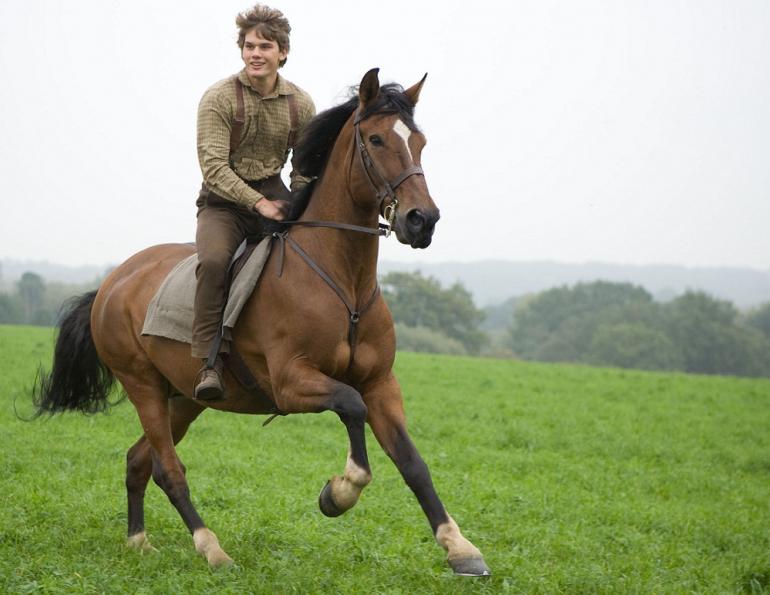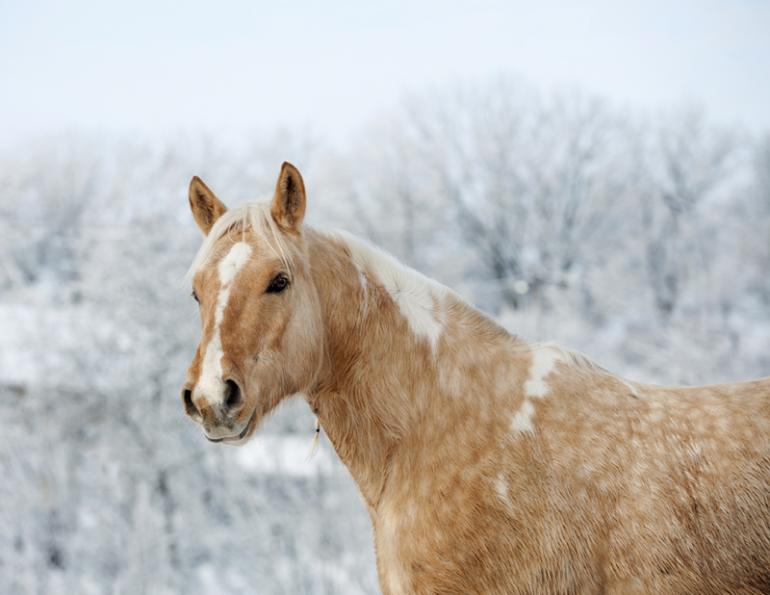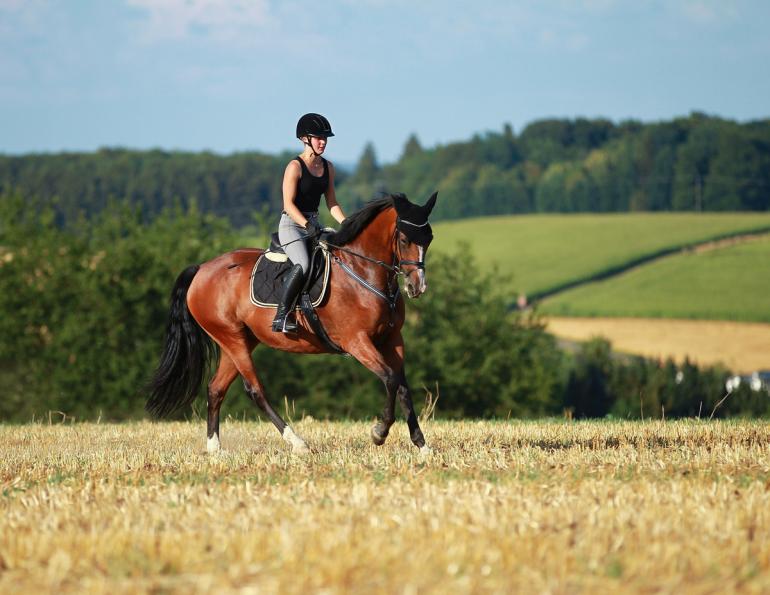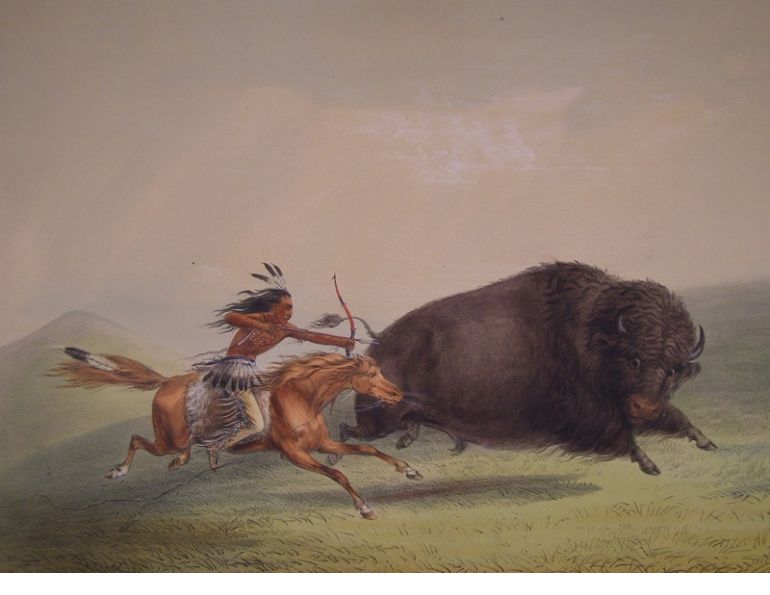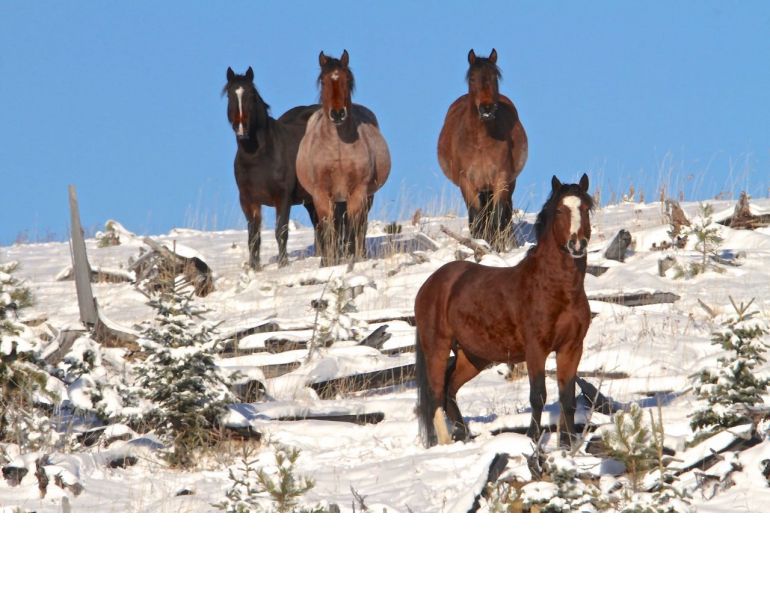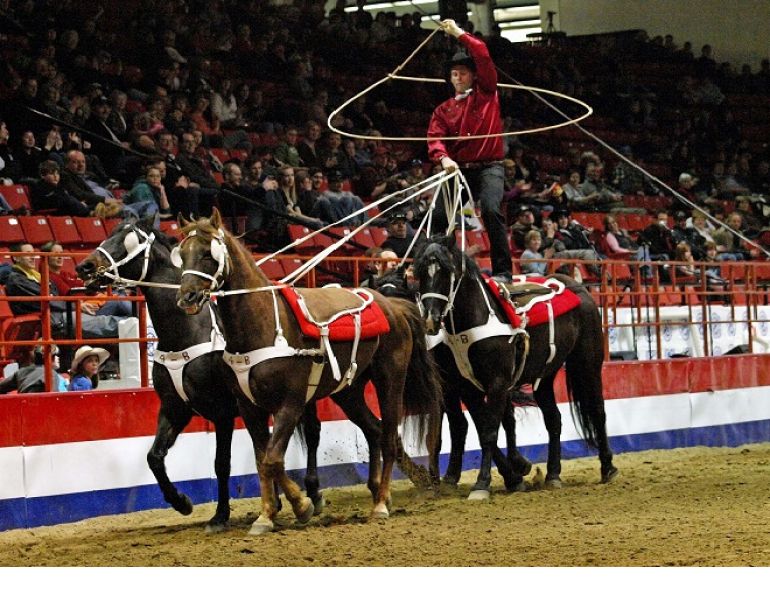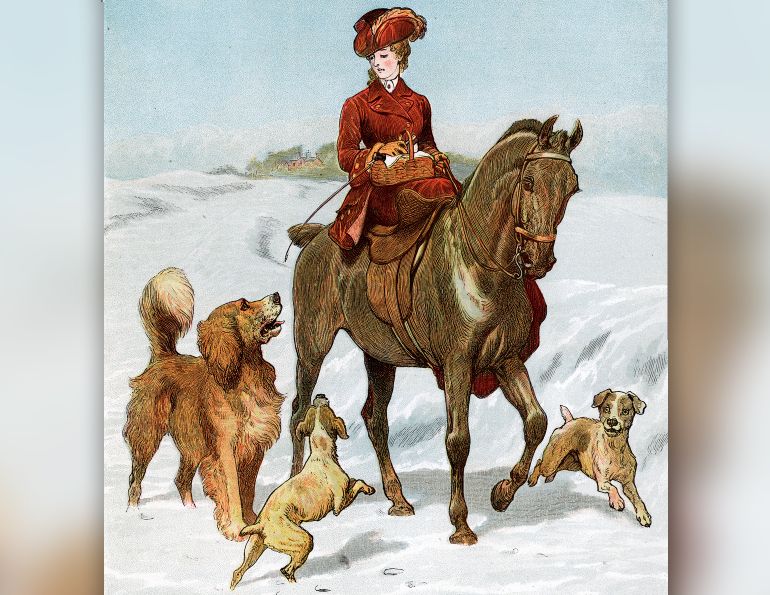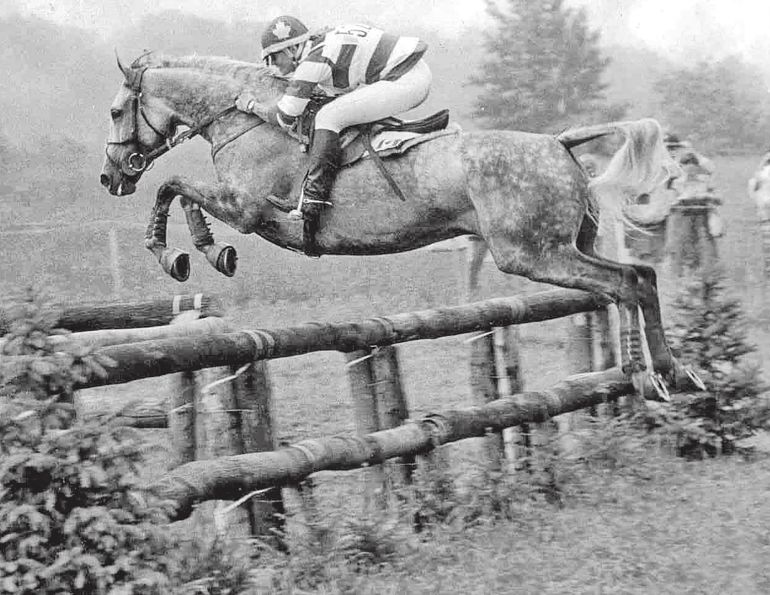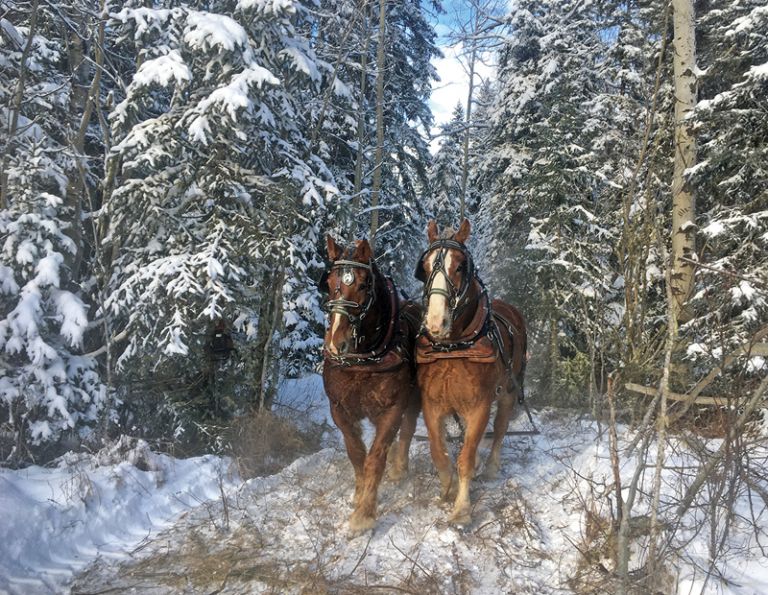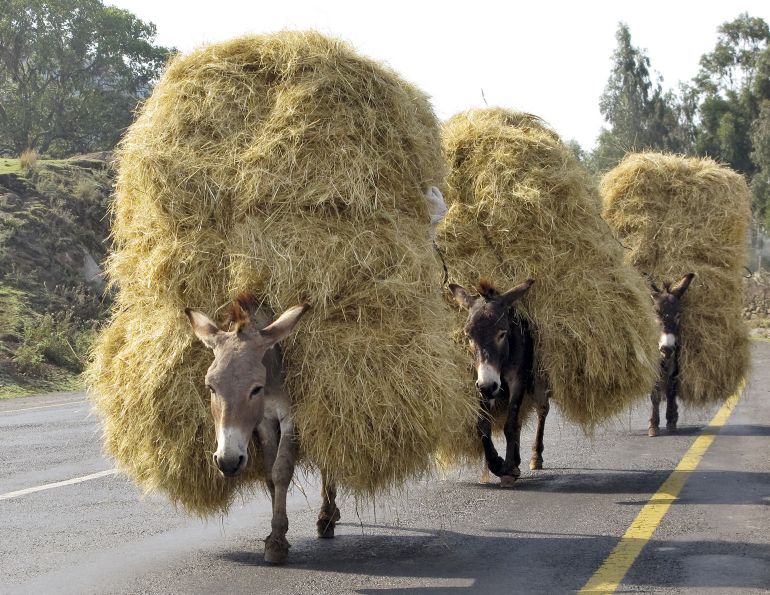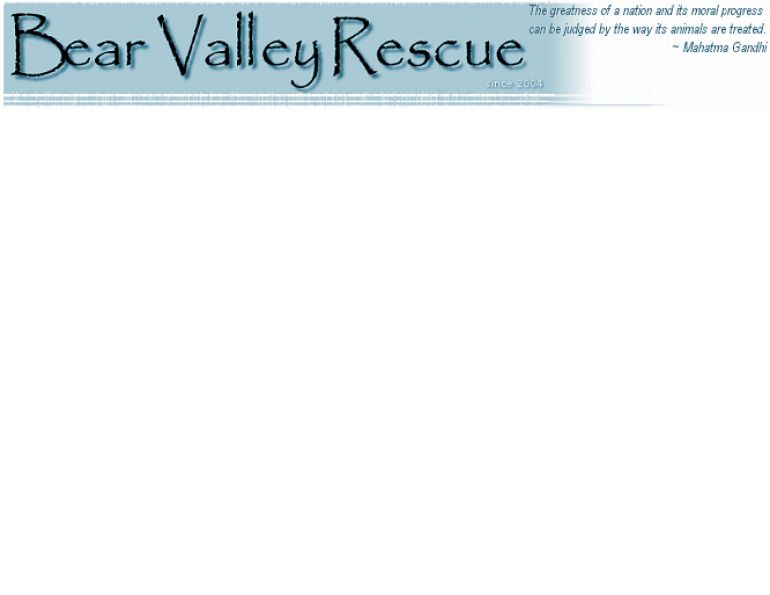By Margaret Evans
In the National Army Museum in London, U.K., a special exhibit features a curious box. The walls on the inside of the box are mirrors, each one reflecting another. Placed inside the box are dozens of cut-out horses. They are all white, unnamed, undefined. But as they reflect back and forth on the mirrors, the little cut-out horses are multiplied into infinity. The image, so simple, is a profound reminder that over eight million horses on all sides died in the horrors of the First World War.
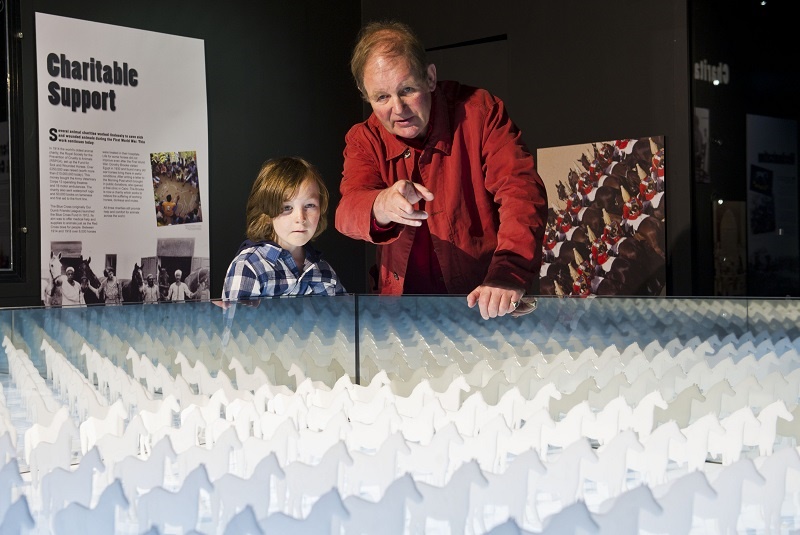
War Horse author, Michael Mopurgo, shows the mirror box to young Ned McCauley. Photo: James McCauley; provided courtesy of National Army Museum
The mirror box is part of War Horse: Fact & Fiction, an exhibit to recognize and honour all the forgotten horses that served in the war and are immortalized in the successful London play as well as Academy Award-winning director Steven Spielberg’s screen epic (which is nominated for six Academy Awards including Best Picture). Both productions are based on author Michael Morpurgo’s hugely popular children’s novel War Horse, first published in 1982.
From the moment of birth of a spunky Thoroughbred foal in the rolling green fields of Devon, England, Albert Narracott (played by lead actor Jeremy Irvine) is captivated as he watches the colt grow from weanling to yearling. His father, Ted (Peter Mullan), buys the young horse at auction to plough the farm fields and Albert, totally smitten, trains ‘Joey’ under saddle and in harness.
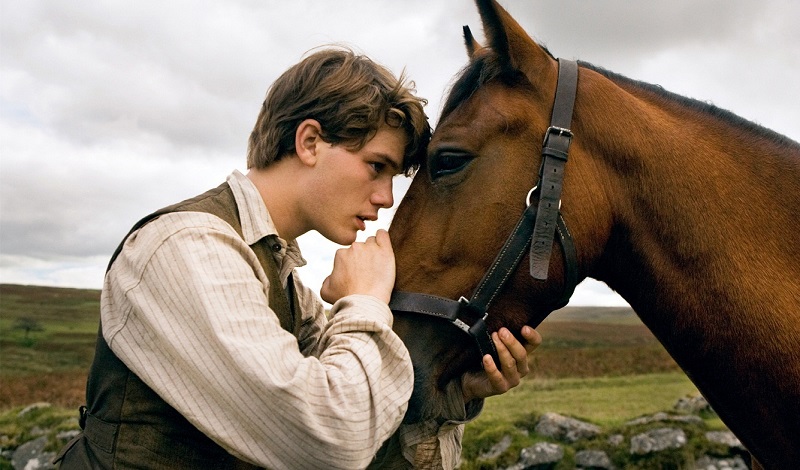
Spielberg's War Horse centers around the powerful friendship between a boy, Albert, and his horse, Joey. Photo courtesy of Walt Disney Motion Pictures Canada
The horse and the teenager form a special bond, Albert training him to come to the call of an owl which he imitates through cupped hands. This bond would later prove critical.
As the clouds of war gather, Rose, Ted’s wife, shows Albert the medals his father earned when a sergeant in the Boer War. She also gives Albert his father’s regimental pennant, a small flag which Albert treasures.
But fate and family troubles lead Ted to sell Joey when he can’t pay the farm rent. The First World War has just broken out and, to Albert’s dismay, Joey is bought by Captain Nicholls in the British Army. In parting, Albert ties his father’s pennant to Joey’s bridle. Joey’s life as a war horse has begun.
Filming War Horse presented special challenges for Spielberg and his crew. As much as the story swirls around those whose lives Joey touched and the heart-thumping tragedies of war, it is ultimately about a horse and the horrors all horses faced during that awful time. Capturing those moments – the battle charge, hauling heavy artillery, trench warfare – had to be done with a balance of realism yet discretion given that the film would be targeted for family viewing with a PG-13 rating.
Spielberg made the decision that the film was not going to use computer-generated imagery (CGI). He would use real horses, several hundred of them, all trained and conditioned into their respective roles. And it would take the acclaimed, collective talents of his crew to capture the visuals that would be faithful to history while not putting any horse at risk.
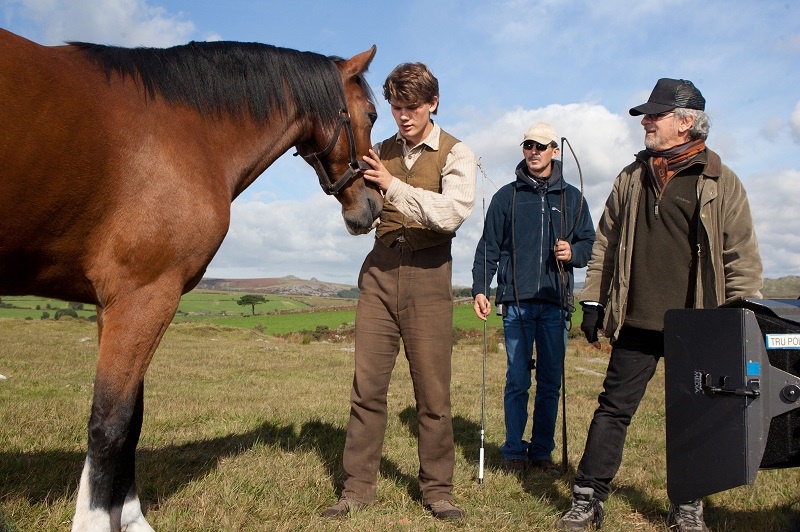
The safety and well-being of the horses on the War Horse set was of the utmost importance to director Steven Spielberg (right). Photo courtesy of Walt Disney Motion Pictures Canada
To ensure the well-being of the horses, Barbara Carr, certified animal safety representative with the American Humane Association, spent 1,100 hours over a four-month period overseeing hundreds of horses as the production progressed. For instance, one cavalry charge involved 130 mounted extras. It was an intense assignment as she monitored the animal action. But her critical eyes were what Spielberg wanted and what earned the film the coveted “No Animals were Harmed” AHA seal of approval.
Related: In Memory of a War Horse
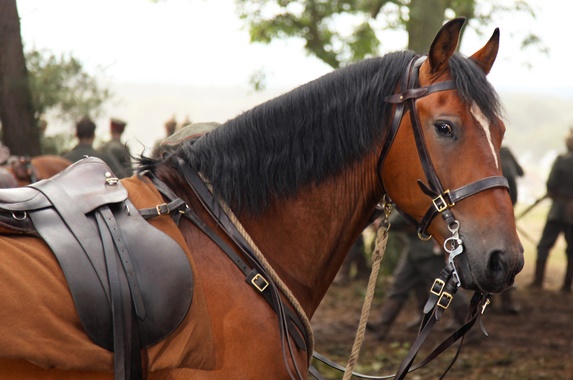
War Horse follows the adventures of Joey as he struggles to survive as a war horse during World War I. Photo courtesy of Walt Disney Motion Pictures Canada
“(Horse master) Bobby Loygren and his team literally performed miracles with the horses on this film,” said Spielberg. “The thing I emphasized from the outset was that the horses had to be safe. I love horses and I didn’t want them to ever be in harm’s way. Bobby did that. Another essential person was Barbara Carr, the American Humane representative, who was there for every single shot. I gave her full power to pull the plug if she ever felt any of the horses were not up to the challenges or if she thought they could be injured in any way. I wanted her to be part of all the action and stunts the horses perform, to watch the rehearsals where we moved in slow motion one step at a time, and to say ‘I think this is safe’ or not. It was a vital collaboration between me, Bobby and Barbara.”
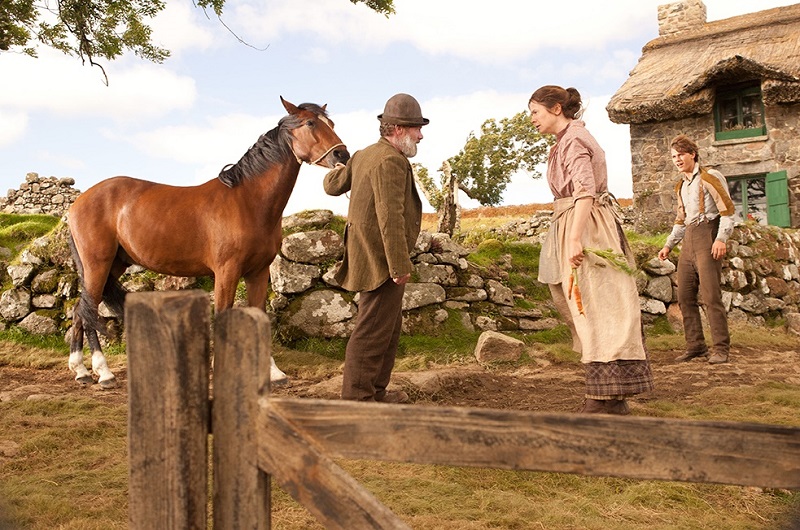
Albert is overjoyed when his father, Ted, purchases Joey at auction to be the work horse on the family farm. Photo courtesy of Walt Disney Motion Pictures Canada
“Working with Steven Spielberg on this monumental movie is a high point in my life,” said Carr. “The subject matter has deep meaning to all of us at the American Humane Association and helps to inform the world of the contribution of the horses in World War 1 and the establishment of our Red Star Animal Emergency Services program at that time.”
There were three months for training the horses during pre-production and Joey in real life was represented by fourteen different horses, eight of them as an adult animal, four as a young colt, and two as a foal. Joey’s friend Topthorn, a black thoroughbred, was played by four horses. Both the horses had a specialist equine “hair and make-up” team who touched up coats with non-toxic paint and added markings for continuity.
Prior to the start of principle photography, Carr monitored the safety of the horses as they were trained to play the hero roles.
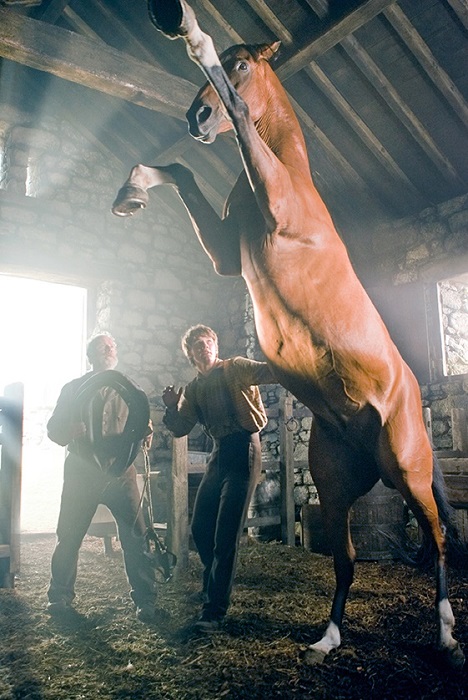
Joey is a feisty thoroughbred when Ted Narracott (played by Peter Mullan) first brings him home, but Ted’s son, Albert (Jeremy Irvine) forms a bond with the lovely bay horse. Photo courtesy of Walt Disney Motion Pictures Canada
“The hero horses of each character had to be trained to do similar actions, and the actions required of each horse had to be trained in a very safe way,” said Carr. “I monitored the training to ensure that care was taken in training each action in small stages so that the horses would understand what was required. Horses had to be trained to pull plows and perform specific actions wearing harnesses covered with fake barbed wire.”
Related: Horses with Jobs - Police Horses
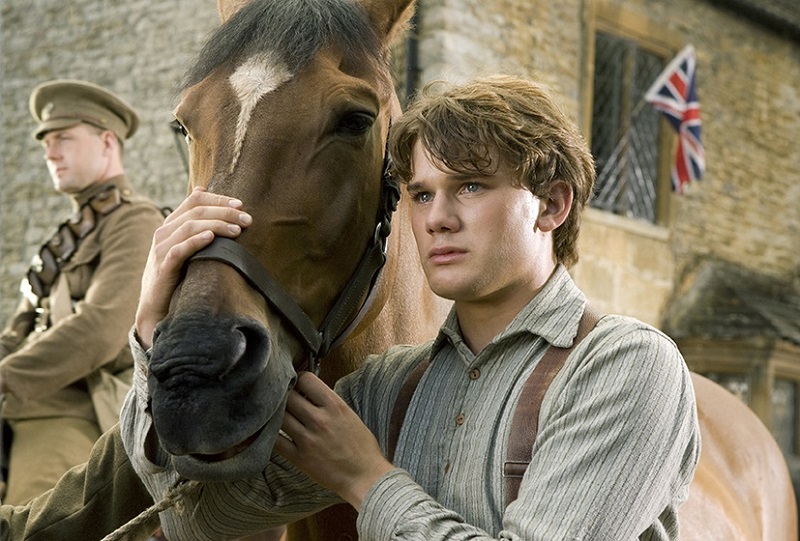
Photos (above and below): Sadly, Albert and Joey are parted with the outbreak of World War I, when Joey is sold to a captain in the British army. Photos courtesy of Walt Disney Motion Pictures Canada
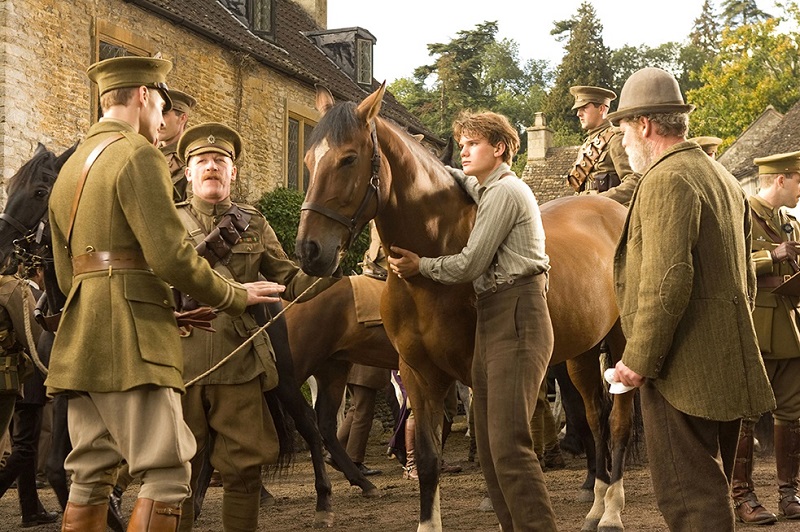
Joey is trained for military work and deployed to France with Captain Nicholls where they face a cavalry charge on a German encampment. Nicholls dies and Joey, along with his friend Topthorn, falls into German hands. The two friends become harness horses for the ambulance wagon until, later, they are mounts for two young German brothers who escape the ride to the front line and hide in a windmill. When German officers find them they are executed on the spot. After the Germans leave, Emilie, who lives on the farm with her grandfather, finds the horses. It is a lighter interlude before the Germans recapture the horses, this time for pulling brutally heavy artillery. But the pennant worn by Joey is kept by the grandfather.
The movie was shot entirely in England with the exception of a few pick-up shots in California. In order to keep stress on the horses to a minimum, they did job-sharing. With so many horses playing Joey, all of them could spell each other off and stay well-rested.
“Steven had the entire set quiet,” said Carr. “No movement. He made everyone so aware of what was going on with the animals so that they were never put in any stress at all. And yet, it was so emotional, the whole crew was crying.”
War Horse, Spielberg’s first venture into a story set in the First World War, was a chance to remember a time when horse power was critical to defeat an enemy – a time of terrible trench warfare, disease, hunger, indescribable fear, and strange friendships.

A panicked Joey gallops through No Man’s Land in this horrific but memorable scene. Photo courtesy of Walt Disney Motion Pictures Canada
1918. Albert has enlisted and is fighting in the Battle of the Somme. His troops charge across No Man’s Land to occupy a deserted German trench. Not far away, Joey and Topthorn are working the front line after years of hard service in the German army. But the ravages of war finally overwhelm Topthorn as he succumbs to exhaustion. Joey, cornered by an advancing tank, panics and runs into No Man’s Land amid torturous barriers and slick mud. He collapses, completely entangled in barbed wire, its thorns ripping his flesh. And he can be seen by both German and British troops. In an extraordinary moment united by the plight of a courageous war horse, Colin, a British Geordie soldier waving a white flag, and Peter, a German soldier with wire cutters, meet to help Joey.
Creating the horrific scene when a panicked Joey gallops through No Man’s Land - the recognized area between enemy trenches - and gets entrapped in barbed wire, required special effects realism for which Spielberg’s films are renowned. Special effects supervisor Neil Corbould built a stunningly realistic, full-size Joey for the scene.
“He was fully animatronic and sitting on his knees,” said Corbould. “We dug a one-and-a-half metre hole, and we had four or five puppeteers basically buried beneath the ground, operating the horse.” Toby Kebbell, who played Colin, said that the animatronic horse was so realistic it had the ability to blow air from flaired nostrils and jolt its head in pain.
For the close-ups of Joey’s face, Spielberg used Finder, one of the real horses starring as Joey to capture his emotions.
Hatreds are set aside as Colin and Peter work to free Joey. Colin wins a coin toss for ownership of Joey, guides him back to the trench and, eventually, to a British medical camp where Albert is recovering from temporary blindness. Colin calls for a vet but the army doctor instructs the horse be shot to put him out of his misery. But news of the surviving war horse rapidly travels through the camp, reaching Albert. Instinctively, he raises cupped hands, sounding the call of the owl. Joey’s ears prick….
War Horse is a story of belief against all odds and tenacity in the face of complete despair. In its simplicity, set against the starkness of war, it is the story of a boy’s love for his horse. Yet it speaks to something more. Perhaps War Horse is the mirror box for the millions of humans lost in conflict throughout time. Love endures in infinity for the fallen and for the countless horses that have followed us on the human journey, their hoofprints forever imprinted in the trenches of our soul. 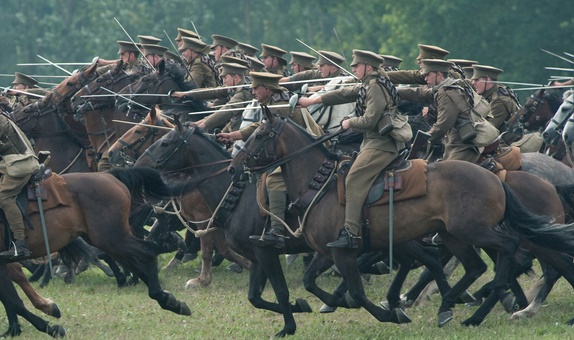
Over eight million horses on all enemy sides died tragically in the First World War. Photos courtesy of Walt Disney Motion Pictures Canada
Related: Horses in Hollywood Movies



